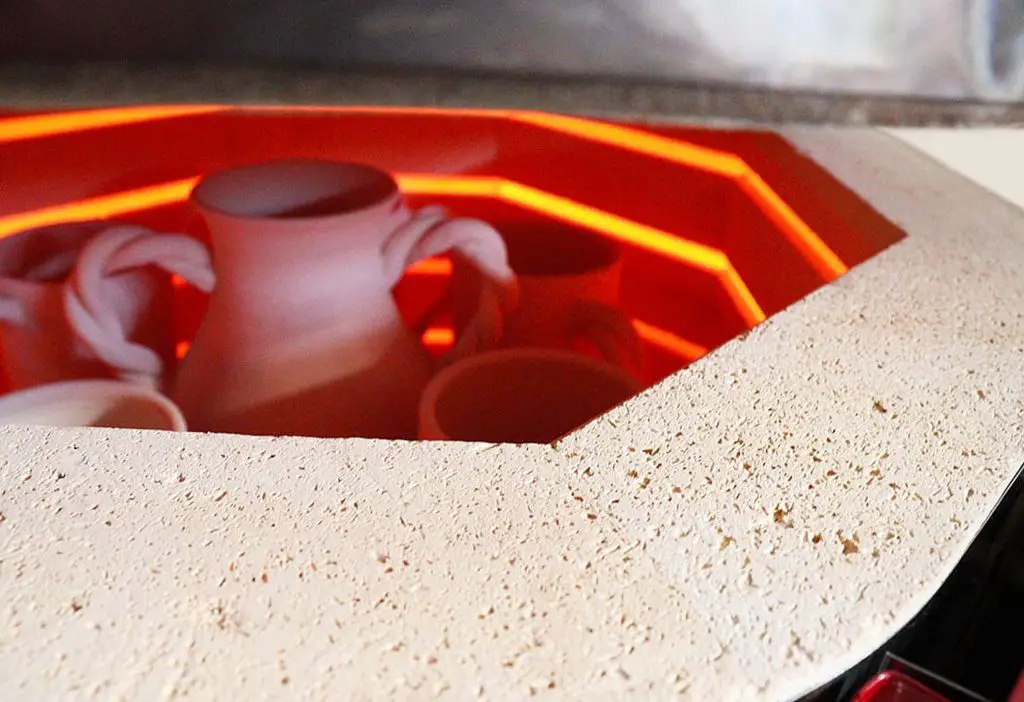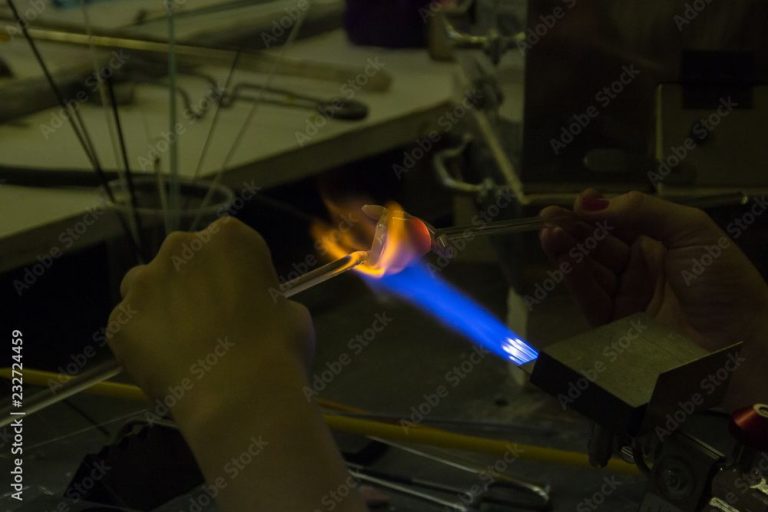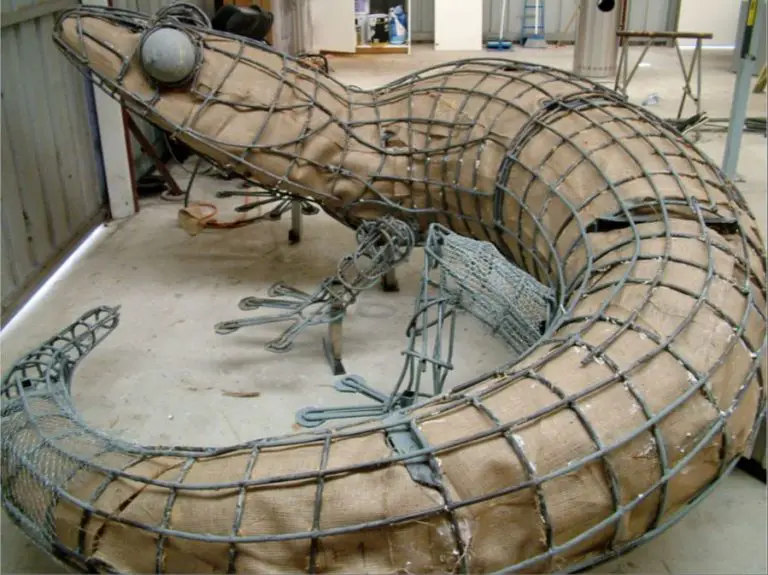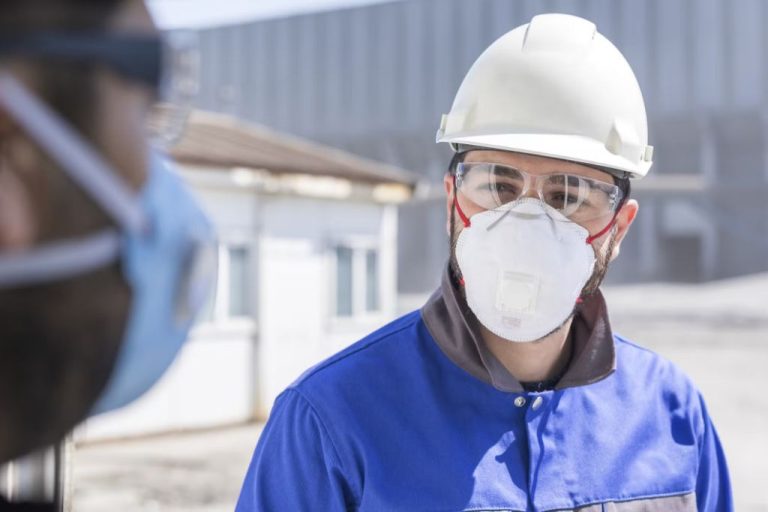Do Kilns Use A Lot Of Electricity?
Kilns are a type of oven used for drying, firing, and hardening various materials such as clay, ceramics, and bricks (Kiln Definition & Meaning). They produce and maintain high temperatures needed to transform raw materials into finished products through heat treatment. Kilns allow precise control over heating conditions like temperature, heating rate, and atmosphere to achieve the desired physical and chemical transformations in the material being fired.
Kilns have been used for thousands of years to produce pottery, tiles, bricks, lime, cement, and other materials. In modern times, they are still a vital tool for artists, crafters, industrial manufacturers and builders. With many types of kilns available today, from small hobbyist models to large industrial kilns, these high-temperature ovens continue to serve an important role across many industries and applications.
How Kilns Work
Kilns work by heating up the inner chamber, called the firing chamber, to very high temperatures in order to harden clay objects placed inside. They use heating elements, insulation, and specific design features to achieve these high firing temperatures.
The main heating elements in electric kilns are heating coils made of resistive metals like nichrome. When an electric current passes through the coils, they heat up due to resistance and radiate heat into the firing chamber. The coils are usually arranged near the top, bottom, and sides of the kiln to distribute heat evenly.[1]
Insulation is critical in kiln design to retain heat in the firing chamber and achieve the desired temperatures. Kilns usually have thick, heat-resistant firebricks or ceramic fiber blankets lining the interior walls. The exterior may also have insulation to prevent heat loss.
Kilns are engineered to allow heat to spread evenly throughout the firing chamber. Features like venting, peepholes, and shelves help distribute heat and allow users to monitor the firing process. The kiln shape, such as oval, cylindrical or rectangular, also affects heat circulation.[2]
Common Kiln Types
There are several common types of kilns used for various applications.
Ceramic kilns are used for firing pottery, tiles, and other clay objects. Common types of ceramic kilns include electric, gas, wood, and raku kilns. Electric kilns are very popular for home studios due to their ease of use and temperature control (Kiln Frog).
Glass kilns are designed to withstand the high temperatures needed for glassmaking, usually ranging from 1500°F to 2300°F. Major types of glass kilns include electric, gas-fired, and wood-fired kilns. Each offers different advantages in terms of temperature control, atmosphere, and fuel source (Kiln Arts).
Metal kilns are used for firing metal clay objects, enamels, heat treating metals, and other high-temperature applications up to 2300°F. Common types are electric, gas, and some ceramic kilns modified for metals. Temperature uniformity is a key factor in selecting a metal kiln.
Electricity Usage Factors
There are several factors that impact how much electricity a kiln uses:
- Kiln type – Electric kilns generally use more electricity than gas, wood, or other fuel types. Electric kilns require electricity to heat the elements, while other types use electricity mainly for controls.
- Kiln size – Larger kilns require more electricity to power larger or additional heating elements. The interior cubic feet and number of kiln sections impact energy use.
- Firing temperature – Higher firing temperatures require more energy to reach and maintain heat. Glaze firings above cone 6 use considerably more electricity than lower temperature bisque and earthenware firings.
- Firing cycle – Longer firing cycles require kilns to run for more hours, using more electricity. Fast-fire cycles are more energy efficient than traditional slow cycles.
Knowing these factors can help estimate electricity needs for different kiln models and types of firing. Frequent, high-temperature firings in large electric kilns result in the highest energy use.
Estimating Kiln Electricity Use
To estimate the electricity usage of a kiln, you need to know the kiln’s wattage and the length of the firing cycle. The wattage rating of a kiln indicates how much power it draws. This information should be provided by the manufacturer or can be measured with a clip-on ammeter [1].
Once you know the wattage, you can calculate the kilowatt-hours (kWh) used by multiplying the wattage by the number of hours the kiln runs. For example, if a kiln is rated at 10,000 watts (10 kW) and runs for 12 hours, it would use 10 x 12 = 120 kWh [2].
To find the electrical cost, take the kWh usage and multiply it by your electricity rate per kWh. Rates vary greatly by location, but often fall in the range of $0.10 – $0.20 per kWh. So for the example above at $0.15/kWh, the estimated electrical cost would be 120 kWh x $0.15/kWh = $18.
Knowing the kilowatt-hours used per firing helps estimate the operating costs and compare energy efficiency between different kiln models and firing methods.
Average Electricity Usage
The amount of electricity used by a kiln depends primarily on its size and the temperature it reaches during firing. Here are some general estimates for electricity usage by kiln size:
Small Kilns
A small hobby kiln, around 1-2 cubic feet capacity, may use around 1.5-3 kWh for a typical firing cycle. Firing once a week, this could add up to 75-150 kWh per month. At an average electricity price of $0.12/kWh, estimated monthly costs would be $9-18.
Medium Kilns
For medium-sized kilns around 3-6 cubic feet, electricity use may be 3-8 kWh per firing. Firing 1-2 times per week, monthly usage could range from 100-350 kWh. At $0.12/kWh, monthly costs for a medium kiln may be $12-42.
Large Kilns
Large production kilns over 6 cubic feet can use 10-25+ kWh per firing cycle. When fired multiple times per week, electricity use can easily exceed 500-1000 kWh per month. At $0.12/kWh, monthly costs could be $60-120+. (Source)
Factors like temperature settings, insulating materials, and firing schedules impact energy use. But in general, firing small hobby kilns uses relatively little electricity, while large production kilns use much more.

Operating Cost Comparison
When deciding between electric and gas kilns, operating costs are a major consideration. Electric and gas kilns have different associated costs that impact the bottom line. Some key factors are:
Energy efficiency – Gas kilns tend to be more energy efficient than electric ones. The radiant heat transfer of gas allows it to work faster than electric elements. Estimates show gas firing can be 50% more efficient.
Energy costs – The price you pay for electricity vs natural gas heavily impacts costs. According to clayart, electric rates average $0.11-0.15/kWh while gas rates average $1.40-$1.80 per therm. In some areas gas is significantly cheaper than electric.
Firing time – Cycle times are generally faster with gas, meaning lower operational costs. Electric kilns may take 25% longer to complete some firings according to Ceramic Arts Daily. The longer firing time consumes more energy.
Kiln size/capacity – Larger gas kilns used for production can see greater cost savings compared to smaller hobby electric kilns. But for smaller scale use, an electric kiln may be more affordable.
Carefully weighing these variables for your specific needs can determine whether gas or electric kilns offer better value and payback. Talk to local potters and research costs in your area. In some situations, electric and gas operating costs may be comparable.
Energy Efficiency Tips
There are several ways potters can improve the energy efficiency of their kilns and reduce electricity usage.
Adding extra insulation, such as ceramic fiber, can help retain heat and reduce the energy required to reach high temperatures. Properly maintaining the kiln by replacing old bricks and elements as needed improves energy efficiency. Firing habits can also have an impact – firing fewer alone-standing pieces, eliminating unwanted bisque firings, and optimizing load size to match the kiln’s capacity all reduce electricity use per piece.
According to research by Oldforge Creations, a thicker layer of insulation allows kilns to reach higher temperatures with less energy input from the heating elements[1]. Performing regular maintenance on the kiln’s heating elements and thermocouples ensures it is operating at peak efficiency[2]. Thoughtful firing habits like grouping pieces together and eliminating unnecessary firings also yield significant electricity savings over time[3].
New Technologies
There are several exciting new kiln technologies emerging that can greatly increase energy efficiency. According to Electric kilns: How an old technology is key to our climate future, electric kilns consistently achieve higher thermal efficiency than fossil-fueled models. Electric designs recirculate heat, allowing them to maintain set temperatures with less energy input.
Kiln automation is another innovation, enabling precise temperature control. As More efficient kilns explains, automation allows kilns to optimize heating and cooling cycles. This reduces overheating losses, lowering electricity usage. Integrating renewable energy sources like solar and wind is also emerging, according to The Green Wave of Energy-Efficient Kilns for Cements. Overall, these new kiln technologies promise major gains in energy efficiency.
Conclusion
In summary, kilns can use a significant amount of electricity depending on the kiln type, size, and usage habits. For some artists or small studios, kiln electricity costs may be manageable, but for larger scale operations, these costs can really add up.
Improving kiln energy efficiency should be a priority for any studio. Simple strategies like minimizing idle time, loading efficiently, insulating kilns, and upgrading to newer technologies can help reduce electricity usage and operating costs. With some planning and investment in efficiency, potters can reduce their environmental impact and carbon footprint while also saving on energy bills.
While kilns will always require considerable power to generate the extreme temperatures needed for firing ceramics, potters today have more options than ever for limiting electricity consumption. Taking advantage of these technologies and techniques benefits both the individual artist as well as the broader community.



